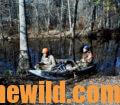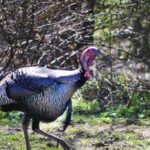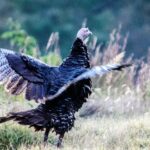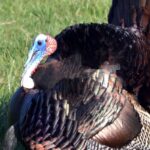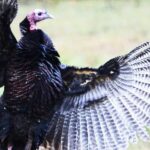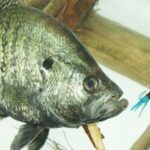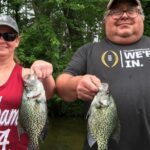Editor’s Note: Hunting in a swamp isn’t as mysterious or as difficult as some hunters may believe. Often you’ll encounter some of the biggest bucks ever there because these waterways can provide a sanctuary for deer. The definition of a swamp, one of the most-valuable ecosystems, is an area of land permanently saturated or covered with water. Swamps generally are dominated by trees. Many animals live in swamps, as well as nesting birds, fish, amphibians and reptiles. Swamps act as giant sponges by absorbing excess water and thereby moderating the effects of flooding. Swamps also act like water treatment plants, filtering wastes and purifying water naturally.
Darkness was falling on the creek. The canoe had only a few inches of freeboard because inside the craft was a deer that topped 250 pounds and two hunters. The buck had been taken in late afternoon. Realizing that time was too short to field dress the animal and paddle to the pick-up point before dark, my two friends opted to portage out the deer. One friend remembers, “When w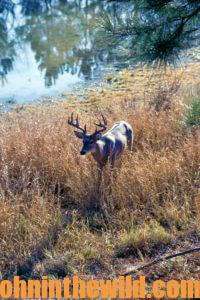 e loaded that heavy buck up and started paddling, we knew we had put a load on the canoe. But we never would have been able to drag the deer out before dark as far back in the woods as we were.
e loaded that heavy buck up and started paddling, we knew we had put a load on the canoe. But we never would have been able to drag the deer out before dark as far back in the woods as we were.
Other hunters are rediscovering the value of canoeing for deer. The canoe was a hunting staple of the Indians, traders and trappers of early America. Canoeing is one of the easiest, most-adaptable, productive methods of deer hunting available. Hunters who venture far into the backcountry on waterways and in swamps find larger, older deer that have fled from hunting pressure. Penetrating backwoods areas requires much walking, knowing how to read a compass and a lot of dragging if a deer is in fact taken. But canoeing to out-of-the-way spots means exploring the deep woods and its waterways without extensive walking, easily carrying in loads of heavy gear and sharing a silent ride in a light canoe with a trophy deer as you leave.
Two basic techniques of getting in and out of the forest by canoe are the “paddle-down, paddle-back tactic” and the “put-in, float-down, take-out system.” On flat water such as slow-moving streams, dead lakes, swamp holes, beaver ponds and/or flooded woods, a hunter can get into his canoe and paddle to the area he intends to hunt. When the hunt is completed, he merely loads his deer up and paddles back to his starting point.
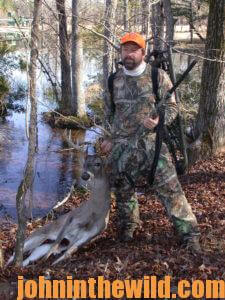 The “put-in, float-down, take-out method” usually works better on fast-moving streams, creeks and/or rivers. The hunters are left at the place where they plan to begin their hunt. From this disembarking point they float or paddle to specific hunting regions. Then after the hunt is over, and the game is loaded, the men paddle with the flow of the river to their pick-up point.
The “put-in, float-down, take-out method” usually works better on fast-moving streams, creeks and/or rivers. The hunters are left at the place where they plan to begin their hunt. From this disembarking point they float or paddle to specific hunting regions. Then after the hunt is over, and the game is loaded, the men paddle with the flow of the river to their pick-up point.
Hunting styles vary with individual hunters. Some prefer a camping and hunting trip on the water experience that may span several days. The canoe is perfect for this adventure because it allows a group to float their camping gear deep into the woods, much closer to the hunting area. From the base camp, excursions can be taken by canoe to scout, set-up stands and carry game back to the base camp. The canoe also can be used if there’s a need to return to the car during the hunting trip. Even if the base camp is stationary, each hunter has far more mobility with canoes at the camp than if he has to depend solely on his leg power.
A canoe also offers the hunter who yearns for the solitude of a lone hunt a comfortable, quiet way to pursue his sport. As my friend Billy Pipes explains, “I enjoy canoeing, camping and hunting. By combining all three, I have the best of the outdoor world. Sometimes I’ll go for 8–10 days hunting by myself, setting-up camp each night and taking it down every morning.” Pipes has discovered that the silence of the canoe on a waterway or in a swamp allows him to move in close to a deer before it spooks. “Usually I see a buck before he discovers me. But if the deer does spot me, he simply walks over the bank most of the time – out of sight of the water – and back into the woods instead of running off. By shoring my canoe, I can ease over the edge of the bank where the deer has disappeared and find him feeding only a few yards from where I’ve seen him from my canoe. This method has worked extremely well for me in the last couple of years. There’s nothing more rewarding to me than to take a buck, clean him in the woods and cook a portion of the meat over an open fire before I paddle out with the remainder of the meat the next morning.” For the hunter who likes to take a buddy, scout an area to find where deer are traveling or feeding and set-up a tree stand – the canoe also answers many of his needs.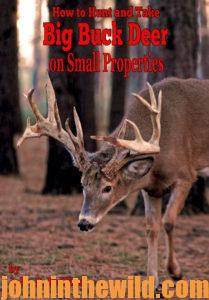
To learn more about hunting deer, check out John E. Phillips’ book, “How to Hunt and Take Big Buck Deer on Small Properties,” available in Kindle, print and Audible versions at (http://amzn.to/1vIcj4m).
Tomorrow: Learning Why and How to Hunt Deer on Waterways from a Canoe

